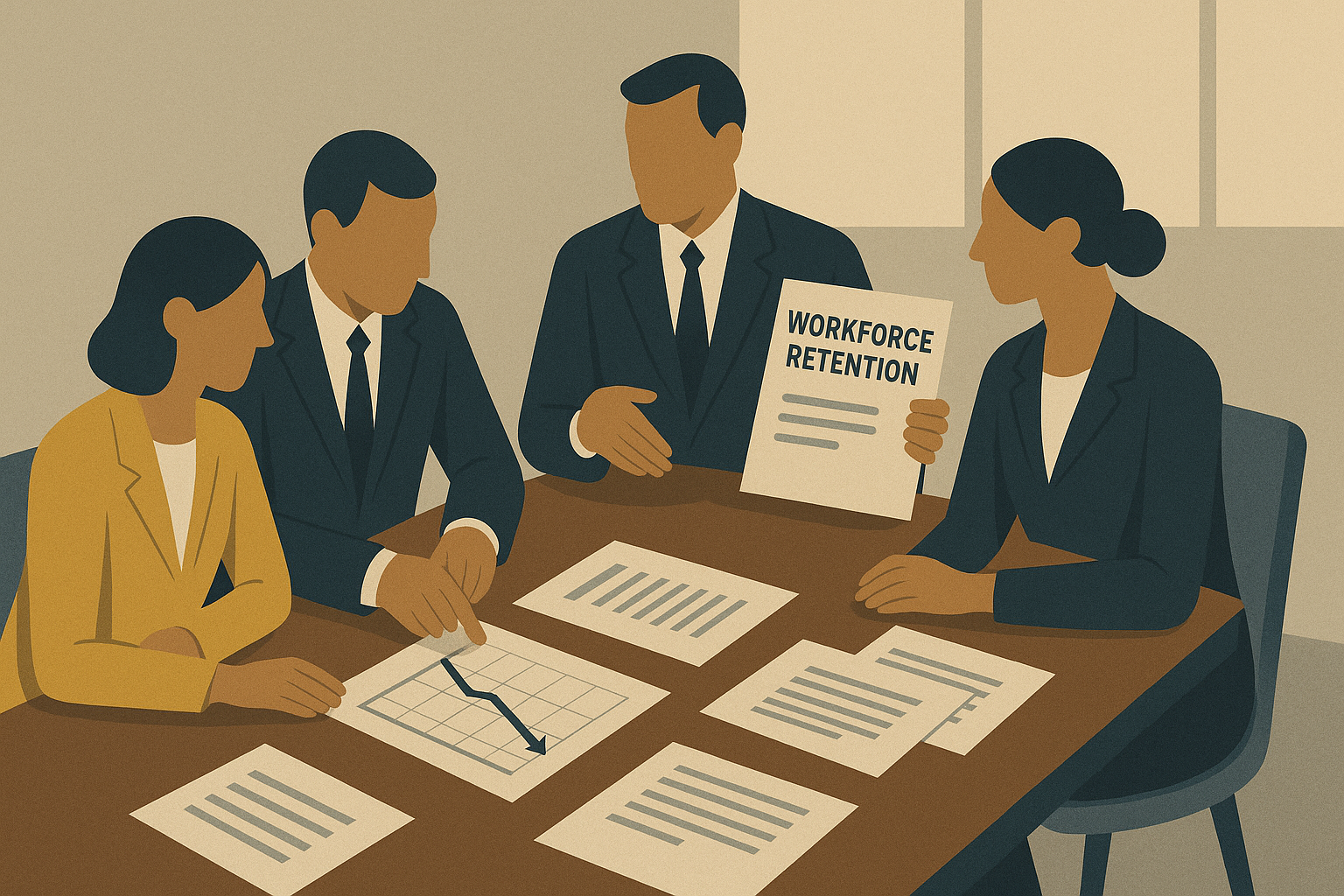UK employers are entering spring 2025 with growing caution and sharpening focus. According to the latest CIPD Labour Market Outlook, employer confidence has slipped to its lowest level outside the pandemic period, with the net employment balance — a key measure of recruitment optimism — falling to +8. This marks a sharp drop from +13 last quarter and +21 in autumn 2024. Managers across sectors are reporting tighter budgets, growing regulatory pressure, and an urgent need to rationalise workforce decisions in the face of higher National Insurance contributions and a rising National Living Wage.
The data paints a picture of widespread hiring hesitation, with only 25% of employers expecting to increase staff over the next three months, down from 29% last quarter. At the same time, 18% of employers now expect to reduce headcount — the highest figure since the first year of the pandemic. While the private sector remains more optimistic than the public, its net employment balance has also slumped to a record low of +11. Recruitment intentions have declined steadily, with just 58% of private-sector firms planning to hire this quarter, compared to 67% in autumn.
Some sectors are bearing the brunt. Retail, in particular, has seen a staggering 41-point drop in net employment balance since autumn, with three in ten employers now anticipating a reduction in staff. Similarly sharp declines were recorded in wholesale and real estate (−29), construction (−24), and healthcare-related fields such as social work and human health activities. In contrast, more resilient confidence can be found in higher-paid sectors like finance, information and communication, and professional services, which face proportionally lower cost increases from wage and tax changes.
Redundancy planning is rising, but enhanced exit packages are now seen as good practice, not generosity.
Redundancy expectations remain stable but elevated, with one in four employers planning cuts in the coming quarter. Among those making redundancies, the median planned reduction is 5% of the workforce. Enhanced redundancy pay — offered by half of all firms that made cuts last year — is most common among larger employers and public sector organisations. Many employers also report offering additional support, from outplacement services to extended benefits, reflecting a broader recognition of the reputational and internal morale risks associated with restructuring.
Job vacancies, meanwhile, remain difficult to fill across large swathes of the economy. A third of employers report hard-to-fill vacancies — a figure that hasn’t budged in the last three quarters. Shortages are especially acute in education, care, manufacturing and construction. Notably, 33% of employers in compulsory education and 28% in health and social care expect to face significant difficulties filling roles in the next six months. This persistent mismatch between available talent and open roles complicates any efforts to streamline operations, forcing managers to rethink workforce models and invest in retention and reskilling.

Pay growth remains steady but cautious. The median expected pay rise across sectors is 3%, unchanged for a year — and now below the latest CPIH inflation figure of 3.4%. While this stabilisation suggests a return to pre-pandemic norms, it also indicates tight wage control at a time when staff morale and retention are increasingly at risk. The lower quartile sits at 2%, while the upper quartile is 5%, with some public sector workers potentially seeing higher increases based on pending Pay Review Body recommendations.
For managers, the message is clear: strategic workforce planning is no longer optional. Hiring freezes, redundancy planning, and pay restraint require delicate handling — not just to meet cost targets but to sustain productivity, engagement and employer brand. In this environment, organisations must actively monitor workloads, invest in upskilling where possible, and communicate transparently with staff. As the report notes, ramping down too quickly could leave businesses exposed if growth conditions return faster than expected. Careful recalibration — not blunt cuts — will define the most resilient employers in 2025.


